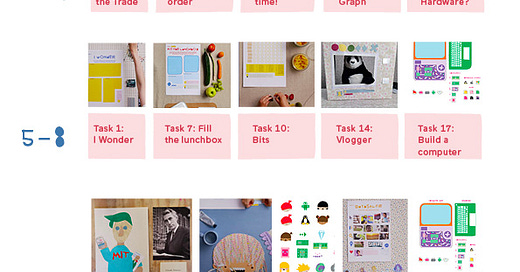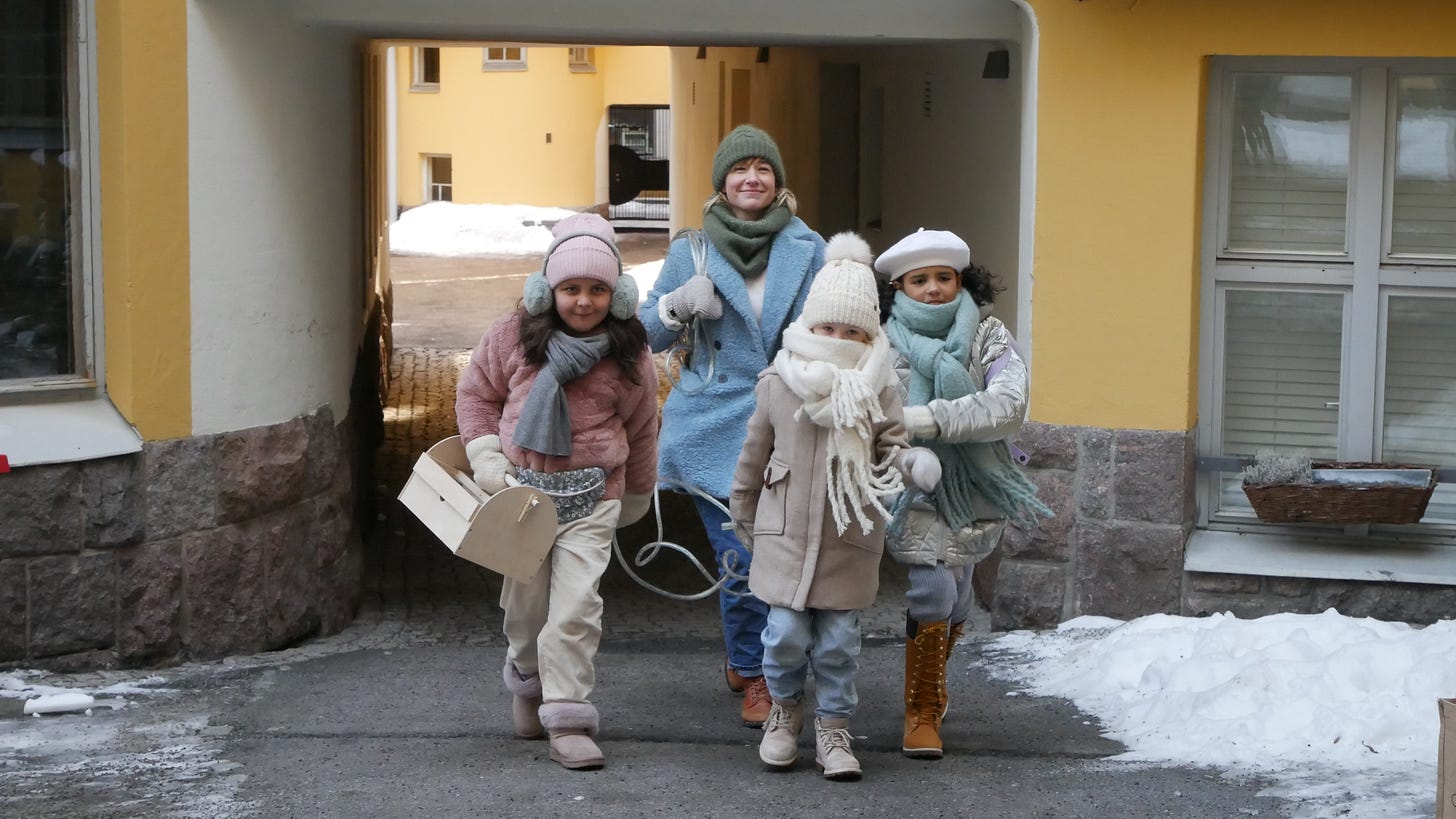My name is Linda. I write a bi-weekly newsletter about computer science, childhood and culture - and there are 9586 of you listening. If you enjoy this issue, please share it with anyone you think may find it useful.
Computer Science Education Week 2021 is here! CS Ed Week is a time to introduce more students to computer science. I made a little collection of ideas from the Love Letters series, inspired by the CS for Arkansas Team. You can find all of the activities below:
Also: an ask! Can anyone point me to a direction where I could learn more about city-planning, plants and computational design? (Obsessing over this Algorithmic Plant Communities: Parametric & Agent-Based Workflows)
Thank you for all the questions you sent! I think there are enough to cover another edition of this newsletter, so I’ll start with a few and maybe continue in a later edition.
What was the most fun you have had on the internet this year?
Last winter the Internet went missing and I alerted a group of three little engineers to find it. It was a freezing cold, fun February day in Helsinki when we shot the video - and I hope we’ll get to share the result with you soo.
On the more digital Internet, the most fun I have is when I find myself surprised and entrammeled, somewhere deep in a rabbit hole. Places like this: r/worldbuilding. Are.na. Hundred rabbits. Yamauchi Family Office. Cursed Computer Iceberg.
Do you have two or three people who you admire, read, etc?
Robin Sloan. Every time I find an e-mail from Robin in my inbox I smile. I love how, in his world, craft and creativity exist together with algorithms and technology. I admire how he can be both analytical but/and in awe.
Lawrence Weschler. First I thought it was the artists, scientists and phenomena he covered that were interesting, but actually, all along, it’s Weschler and his interest in the “incredible, inexhaustible, insatiable, astonishing reality—present all around!” (as put by Robert Irwin). He also just started a newsletter!
Björk. I think I’ve written about Björk, how she sits between science and sensemaking, poems and pure cognition, embodied and ethereal. She truly is from another time (and I only wish she would write more!)
What is your favorite book?
If I had to give one book (and I’ve had to!) it would be Tove Jansson’s Summer book. It’s a book that I keep returning to year after year.
More than books I have favorite authors: ones who teach me to pay attention and help me have a conversation with myself across time. One of the only new years goals I’ll (likely) complete this year is reading a 100 books. It’s been one of the very best decisions I made.
So, names:
From non-fiction world: George Dyson. Helen Macdonald. Lawrence Weschler. Carlo Rovelli. Rebecca Solnit.
From fiction: Jorge Luis Borges. Stefan Zweig. Patti Smith. Cixin Liu.Richard Powers. Ted Chiang. Zadie Smith. Haruki Murakami. Kazuo Ishiguro.
(And somewhere between Mary Oliver).
What are your thoughts on creative coding as a tool to inspire and learn programming?
If anything, I wish coding tools would get weirder. By this I mean they would encourage experimentation and creativity, not like a bicycle of the mind, but like a rainbow pen of the mind.
This is not a fully formed idea, but as a kid I had one of those gel pens where with a twist of the barrel one could choose from several different colors. A computational pen could include at least the following:
Collage (“I made something new out of something old”). DALL-E, GPT-3, whatever the current new generative tool is. For art education the ability to build a Shakespeare-trained writing pen or a brush with the stroke style of Rembrandt is just so immersive.
Simulation (“I made a new imaginary world”). Unity/Unreal Engine, whatever the game engine of the moment is. Being able to simulate a world, a historic event, spread of a pandemic.. So much opportunity and an area where the computer is the perfect material.
Collaboration (“I’m working with other intelligencies across time/space”). Jupyter/Colab/Spreadsheets - or the likes. I think one of the most fascinating things about computers is the ability to collaborate with others - both physically distanced, but also across time.
There is always a lot of debate around computers and humans working together. The computer as the idea-generator, actualizer or the co-creator doesn’t really make a difference to me. Almost all of my favorite art comes out of the interplay between human and machine, whether it’s a piano, a brush or a computer. And I think all artists have a deep curiosity about their materials.
What interests me in code, is what it whispers as a material.
Can I have footnotes for an answer? Yes I can!
Luba Elliot keeps a wonderful newsletter called Creativity and AI that offers a glimpse of everything that is happening.
There’s a 1976 book called Artist and Computer with a question battery on I look at often.
Molly Mielke wrote a long essay on Computers and Creativity. I don’t think we fully understand yet all the nuances of growing up with creative software as a material. I remember MS Paint and the revolutionary feeling of the patterned paint bucket tool. Or how Hypercard helped me tell stories in a completely new way. Same with duets on TikTok - something that would have taken ours on a professional video editing tool, now in seconds.
Linked List
In computer science, a linked list is a linear collection of data elements whose order is not given by their physical placement in memory. But here it is a selection of things I’ve been reading lately.
We’ve been rewatching Princess Mononoke (Yakushima forest is still on my once in a life visit list!) This long portrait of Hayao Miyazaki (and how he prepares to cast one last spell) is well worth the read. Also pointed me to a book of his collected writing: “[H]e’s always worked in the trenches, as part of a team of around a hundred employees devoted just to production, including key animators and background, cleanup and in-between artists, whose desks he used to make the rounds of daily for decades. (His own desk is hardly bigger than theirs.) He still draws the majority of the frames in each film, numbering in the tens of thousands, himself. Only occasionally has he resorted to computer-generated imagery, and in some films not at all.”
I was writing a chapter on the hardware of computers, when I ran into this essay on noisy computers. Pair with Museum of Endagered Sounds, which I confess I spent a good 30 minutes clicking around on.
The best and smartest Holiday Gift Guide for kids comes from The Kids Should See This. Buying through the links supports the site + other worthy organisations.
Classroom
I’m hoping to surface and share stories from all of you and I’d love to see your creations! Here are a few teachers using Ruby in creative, fun and inspiring ways:










Your newsletter is the best! I look forward to it every time! First, you share so many original thoughts and second, when I click all of the links you share, I am reminded of all the super cool, creative things on the web. I'm sure these articles take much more effort to put together than they appear. Thank you so much! I am sharing with everyone I know!